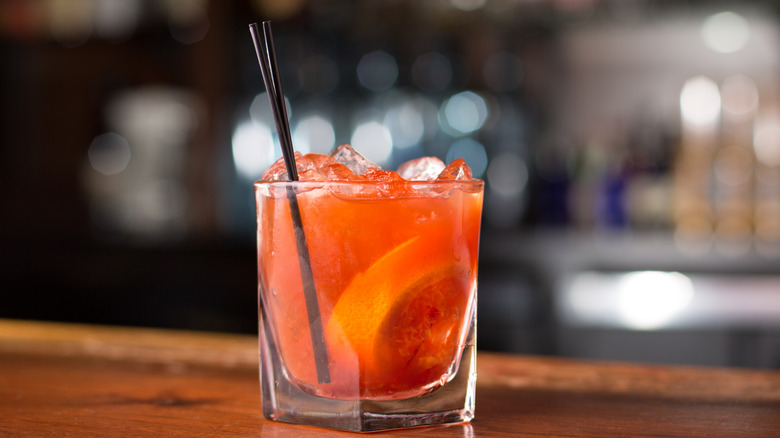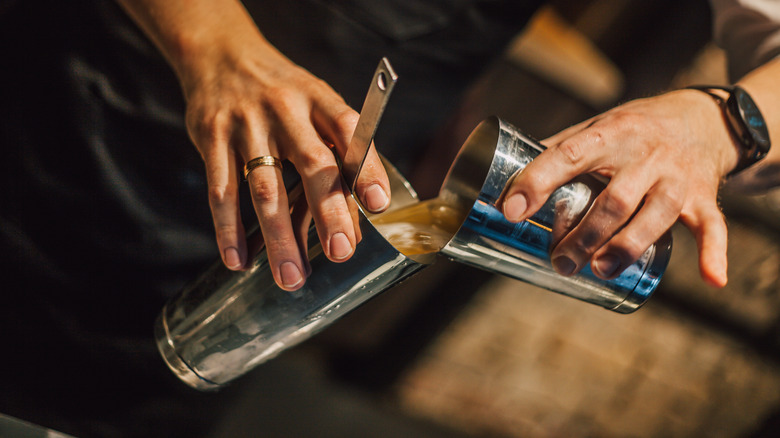How To Craft The Perfect Cocktail, According To Science
While James Bond might famously say "shaken, not stirred" and Tom Cruise added some flare behind the bar in the film Cocktail, crafting the perfect cocktail does not require movie magic. Although the dive bar might just pour whiskey straight, Wired's YouTube video examined how the art of the cocktail is more flavorful due to the precision of science. Although no one wants to recall chemistry class, mastering the melt can bring sipping perfection.
Watching a mixologist craft a cocktail can be mesmerizing. From the multiple ingredients to the perfect garnish, each step builds on itself to create a satisfying sip. Although bakers have come to appreciate that baking temperatures, scientific reactions, and exact measurements lend themselves to a better tasting dessert, the cocktail glass can benefit from science, too. No one is switching a beaker for a shaking tin, but carefully measuring the temperature changes how that cocktail is enjoyed. As the National Library of Medicine asserts, a food's taste profile can change as temperature fluctuates. For example, sweet and bitter notes predominate at a higher temperature.
Even though people might prefer a full glass to ponder the chemical complexities as they impact flavor, one kitchen device might replace the stirring spoon. Is it time to use a thermometer behind the bar to create a better tasting cocktail?
Is the dilution solution the answer to crafting a perfect cocktail?
Have you ever wondered why a mixologist vigorously shakes a cocktail? What about that perfectly clear, round ice ball in a rocks glass? Discovery Magazine asserts that "great bar is just a chemistry lab." While some people might not want to discuss the Periodic Table over a Negroni, appreciating how temperature impacts taste and aroma can lead to a more pleasurable sipping experience. As seen in the Wired "How to Make the Perfect Cocktail Using Science" video, controlling the temperature influences cocktails. Specifically, this method recommends using a thermometer.
From ice slivers chilling the tin during a strong shake to a larger ice cube which more slowly melts, ice brings a change to the beverage's temperature. Changing the liquid by a few degrees can make the sweetness more apparent or the bitterness lessened. By using a thermometer to stir the cocktail, the mixologist can ensure that the serving temperature allows for the balance of flavors to be perfect.
Plus, the temperature impacts how the ice melts, which dilutes the other ingredients in the glass and influences the flavor. It might not necessarily be "mastering the melt," but the concept encourages cocktail drinkers to be a little more thoughtful with that pour. While there might not be safety glasses and a lab coat behind the bar, a better understanding of temperature's impact on the cocktail can lead to a more enjoyable drinking experience.

